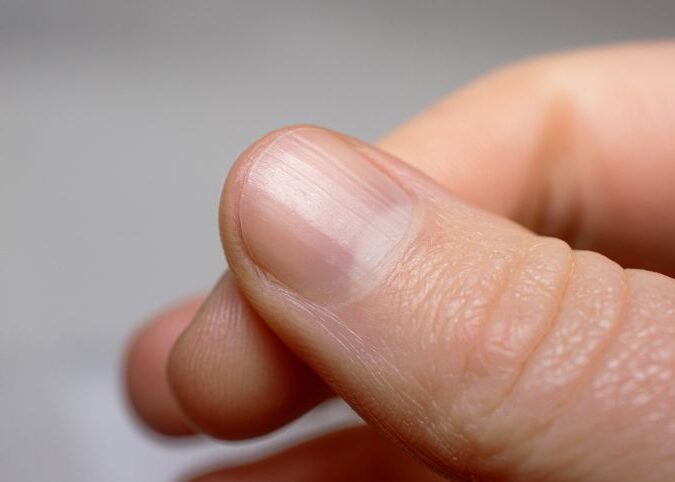BTN News: Nail health is more than just a cosmetic concern—it can be a window into your overall well-being. If you’ve noticed lines or ridges appearing on your nails, it could be a subtle clue to underlying health issues or deficiencies. These changes can range from harmless signs of aging to indicators of serious health conditions like nutritional deficiencies or systemic diseases. Understanding the causes behind these lines, the possible health conditions they reflect, and the steps to maintain nail health is crucial for everyone. In this article, we delve into why lines appear on nails, the health implications, and effective strategies for prevention and care.
What Do Lines on Your Nails Mean?
Nail Trauma and External Factors:
One of the most common reasons for lines or ridges on the nails is physical trauma. Repeatedly striking your nails against hard surfaces or objects can cause visible deformities. Aging, dry skin, eczema, and even conditions like hypothyroidism can contribute to the appearance of vertical lines or ridges. Exposure to harsh chemicals and inadequate hydration further exacerbate these issues, weakening the nails and making them more prone to damage.
Nutritional Deficiencies: The Hidden Culprit
Deficiencies in essential nutrients are a significant factor affecting nail health. The Cleveland Clinic highlights that a lack of zinc can result in “Beau’s lines”—horizontal grooves or ridges—and white spots on the nails. Low iron levels can cause vertical ridges or even lead to “spoon nails” (koilonychia). Additionally, insufficient vitamin B12 affects red blood cell formation, which in turn reduces oxygen delivery to the nail matrix, leading to weakened nails.
Systemic Health Issues: More Than Skin Deep
Nail changes, including the appearance of lines, can also indicate systemic health problems. For instance, “Beau’s lines” may signal an interruption in nail growth due to underlying conditions such as infections, diabetes, vascular diseases, high fever, or the effects of chemotherapy. Mayo Clinic reports that hypothyroidism often presents with brittle nails and vertical ridges, reflecting the body’s impaired ability to produce hormones essential for overall health.
How to Treat and Prevent Nail Ridges
1. Seek Professional Advice:
If you notice changes in your nail’s appearance, consult a healthcare provider to identify any underlying causes and receive appropriate treatment. Conditions like diabetes or hypothyroidism may require medications, while deficiencies might need to be addressed with supplements. Early diagnosis and intervention can prevent complications and improve overall nail health.
2. Hydration and External Care:
Should medical or nutritional issues be ruled out, consider focusing on external nail care. Regularly moisturizing your nails and cuticles with quality creams can help prevent dryness that leads to ridges. Maintaining good hydration can keep both your skin and nails healthy, reducing the appearance of lines and promoting smooth growth.
3. Balanced Diet for Healthy Nails:
A nutrient-rich diet is essential for strong, healthy nails. Incorporate foods high in zinc, iron, and vitamin B12, such as lean meats, seafood, eggs, nuts, seeds, and leafy greens. Ensuring a balanced intake of these nutrients can help fortify your nails, preventing lines from forming due to deficiencies.
Top Tips for Maintaining Nail Health
- Avoid Nail Biting: Biting your nails can damage their structure and expose the nail bed to bacteria and fungi.
- Use Gloves During Cleaning: Protect your nails from harsh chemicals by wearing gloves while doing household chores.
- Limit Nail Polish Use: Give your nails a break from nail polish to prevent them from drying out.
- Maintain Proper Hygiene: Use disinfected tools for cutting nails to prevent infections.
- Care for Cuticles Gently: Push back cuticles carefully instead of cutting them to avoid infections.
- Regular Moisturizing: Keep nails and cuticles hydrated with creams to maintain their strength and prevent ridges.
- Avoid Prolonged Water Exposure: Protect nails from excessive water exposure by using gloves.
- Balanced Diet: Ensure a diet rich in essential vitamins and minerals, and consider biotin supplements for added strength.
- Minimize Harsh Chemicals: Use nail polish removers without acetone to avoid drying out your nails.
- Regular Manicures: Visit a professional for nail care and to identify potential issues early.
Conclusion
Keeping your nails in optimal condition involves more than just regular manicures or applying polish. It requires a holistic approach that includes recognizing potential health indicators, maintaining a balanced diet, practicing proper nail care, and seeking professional advice when necessary. Paying attention to the appearance and health of your nails can help detect underlying health issues early and keep your nails strong and healthy for years to come. Remember, prevention and consistent care are key to maintaining beautiful and healthy nails.


